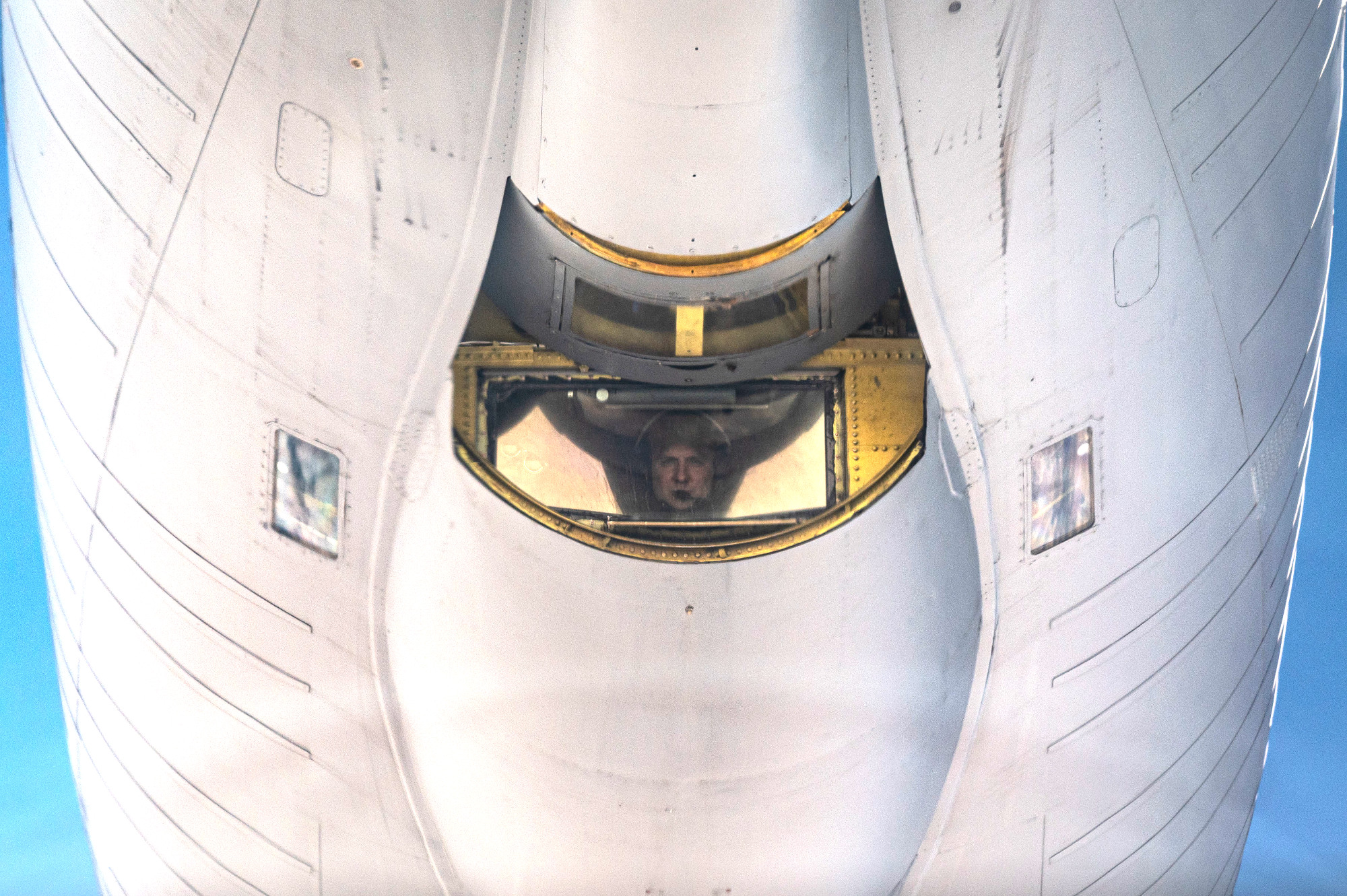A software issue has led the U.S. Air Force to prohibit the crews of KC-135 tankers with the Block 45 upgrade package from using the jet’s autopilot at altitudes under 10,000 feet and while refueling other aircraft. The service has also confirmed that this same “logic error” was responsible for a number of potentially dangerous incidents that led to the imposition of similar flight restrictions last year, which The War Zone
had been first to report. A previous investigation had wrongly assessed that a fault with the powers supplies attached to the malfunctioning autopilots was most likely to blame.
Air Mobility Command (AMC), which oversees the vast majority of the Air Force’s KC-135s, as well as the bulk of service’s other tanker fleets, put these flight restrictions into place on February 3, 2022. Similar flight restrictions were in place between May and October of last year.

“Out of an abundance of caution, on February 3, 2022, AMC re-implemented restrictions of autopilot use in Block 45-equipped KC-135 Stratotankers below 10,000 feet and during air refueling, after finding new data revealing a software fault in the autopilot system,” Abigail Cole, an AMC spokesperson, told The War Zone. “A new aircrew safety report filed on January 11, 2022” prompted this decision, Cole added.
We don’t have any specific details about the incident or incidents described in that safety report. However, we do know that instances of KC-135s experiencing “uncommanded pitch down” with the autopilot engaged were what prompted the imposition of the flight restrictions last year. The nose of the plane pitching down unexpectedly could put the crew in a potentially dangerous situation, especially at lower altitudes or when the refueling boom is physically connected to another aircraft.
The Air Force initially put the blame for these incidents on faulty power supplies in the autopilots on the aircraft involved. “[The subcomponent] was replaced and the system performed as designed,” Capt. Frederick Wallace, another AMC spokesperson, told Air Force Times last year.
AMC now says that this determination was incorrect. “Previous indications led AMC to erroneously believe that the issue was caused by a faulty power supply,” Abigail Cole said in her statement to The War Zone. After AMC received the safety report in January, “Collins Aerospace went line by line through code and found a ‘logic error’ in the autopilot software system,” she explained.
What was then Rockwell Collins led the development of the Block 45 upgrade package in the 2010s, which is now available in kit form for installation on these tankers. United Technologies Corporation acquired Rockwell Collins in 2018, rebranding it as Collins Aerospace.

The Collins-supplied autopilot is a key component of the complete Block 45 package, and one that is understood to be particularly costly. The autopilot found on earlier Block 40 KC-135s was very simplistic, with no ability to automatically level the aircraft off, hold airspeed during level flight, or help maintain speed while climbing and descending. Pilots of these tankers had been very excited about the new capabilities that this autopilot was supposed to offer, but have been dismayed with its actual performance.
It’s unclear when these new flight restrictions on the use of the autopilots on Block 45 KC-135s may be lifted. “Collins is working on a software fix for this problem, which is expected to be available to begin testing at the end of April 2022,” according to Cole.
It will take some amount of time for that testing to be completed, and for the fix to be fully validated, after which it will then be necessary to actually install it on every tanker with the faulty autopilot. It’s not clear how many of the nearly 400 of the KC-135s that are currently in service with the Air Force, including in the Air Force Reserves and Air National Guard, have been brought up to the Block 45 standard since the first updated jets began being delivered in the mid-2010s. This is an issue that would seem likely to affect foreign operators of KC-135s in this configuration, as well.
The restrictions also come as the Air Force says that its tanker fleets are under increasing strain amid pushes to retire older types, like the KC-135 and KC-10, and the continued inability of its new KC-46s to adequately perform the aerial refueling mission. The Air Force is currently working with Boeing to resolve very serious issues with the boom on the KC-46, as well as the Remote Vision System (RVS) that boom operators in the aircraft’s main cabin use to link up to receiving aircraft, as you can read more about here. The boom operators in the Air Force’s older tankers physically lie in a position at the rear of the aircraft to perform their duties.

The Air Force is now preparing to launch a new tanker competition to buy additional aircraft to “bridge the gap” between the end of its currently planned purchases of KC-46s and the expected development of an advanced future aerial refueling platform. AMC, together with U.S. Transportation Command, has also been exploring the possibility of increasing the use of private contractors to provide aerial refueling services for non-combat missions as another means of meeting growing demands for additional tanker capacity.
In the meantime, the KC-135 remains the Air Force’s primary tanker. Hopefully, the issues with the autopilots on upgraded Block 45 examples will be finally resolved and the crews of those aircraft will be able to go back to operating the aircraft as normal.
Contact the author: joe@thedrive.com
